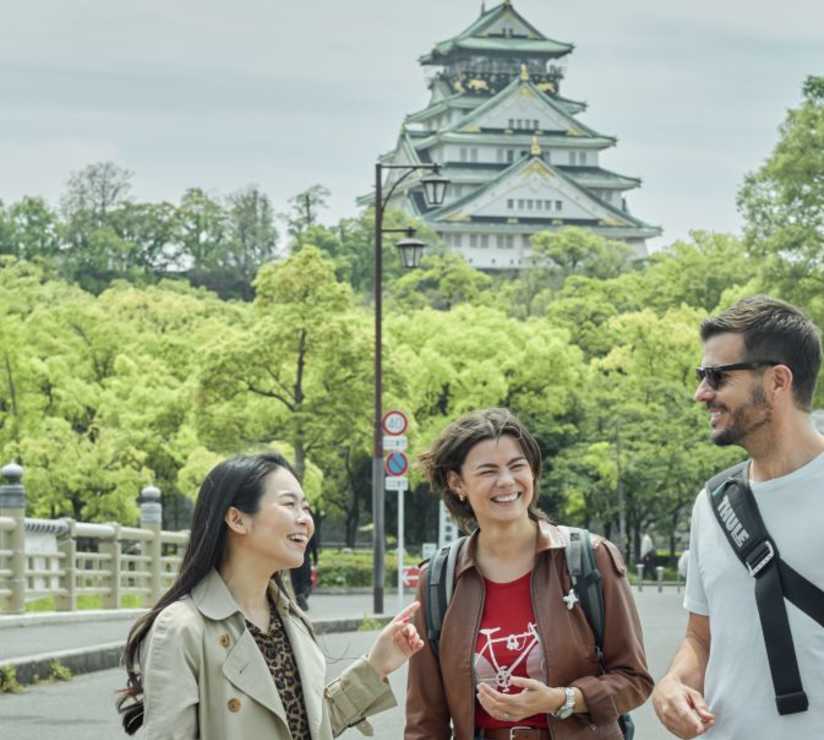Table Of Contents
- Why Osaka is Japan's Kitchen
- What Makes Osaka Street Food Different?
- Where Do Locals Actually Eat?
- The Takoyaki Revolution
- Okonomiyaki: The People's Pancake
- Street Food Tours: Worth It or Tourist Trap?
- What About the Famous Spots?
- Beyond Takoyaki: Hidden Gems
- Fish, Sushi, and Seafood Streets
- Sweet Treats and Dessert Streets
- The Night Food Culture
- Location, Location, Location
- Hotel Food vs Street Food: Why Bother Going Out?
- The Great Choice Dilemma
- Quality Control on the Streets
- Seasonal Street Food Adventures
- Building Your Osaka Street Food Strategy
- The Social Side of Street Food
- Making the Most of Your Trip
- Beyond the Main Attractions
- Final Thoughts: Why Osaka Street Food Matters

Busy takoyaki vendor flipping octopus balls with metal picks, steam rising from the griddle.
Listen up, food lovers. I'm about to take you on a wild ride through the streets of Osaka, where the food hits harder than a sumo wrestler and the crowds never stop coming. Forget everything you think you know about Japanese cuisine – we're diving headfirst into the chaotic, saucy, absolutely addictive world of Osaka street food.
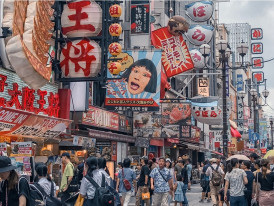
Crowded street scene in Dotonbori with people walking past illuminated food stalls.
Why Osaka is Japan's Kitchen
They don't call Osaka "Japan's kitchen" for nothing. This city lives and breathes food like nowhere else in Japan. While Tokyo gets fancy with its Michelin stars, Osaka keeps it real on the streets. We're talking about a place where locals will fight you over the best takoyaki stall and where every corner seems to have another delicious surprise waiting.
The osaka street food scene isn't just about eating – it's about community, tradition, and pure, unapologetic indulgence. Every bite tells a story, and trust me, I've got plenty of stories to share.
Summary: Osaka earned its nickname "Japan's kitchen" through its vibrant street food culture that prioritizes flavor and community over formality.
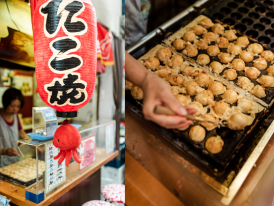
Vendor preparing takoyaki balls, showing the octopus pieces being added to the batter
What Makes Osaka Street Food Different?
Here's the thing about Osaka street food – it's loud, it's messy, and it's absolutely perfect. Unlike the refined sushi counters of Tokyo or the formal kaiseki restaurants, Osaka's street food stalls embrace chaos. Sauce drips everywhere, people shout orders, and the neon lights never stop flashing.
The food here develops its own personality. Take our famous savory japanese pancake – okonomiyaki. It's not trying to be pretty. It's just trying to be absolutely delicious, and boy, does it succeed.
Looking for a private city experience in Osaka?
Explore the city with a local who plans a private day just for you; no groups, no scripts.
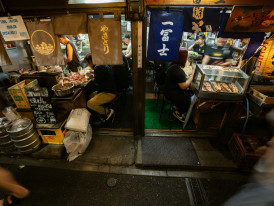
Hidden alley food stall with only a few seats and local customers.Photo by Philip Ho on Unsplash
Where Do Locals Actually Eat?
Forget the tourist traps. Real locals know the best street food hides in the most unexpected places. I'm talking about tiny stalls tucked between tall buildings, vendors who've been perfecting their craft for decades, and spots that don't even have signs.
The main street areas like Dotonbori get all the attention, but venture down the side streets and you'll find where the real magic happens. These locals have been coming to the same stores for years, developing relationships with vendors who remember exactly how they like their food cooked.
Summary: The best Osaka street food experiences happen away from tourist areas, where locals frequent family-run stalls with decades of tradition.
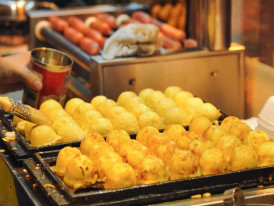
Close-up of takoyaki being turned in the griddle holes, showing the cooking technique.
The Takoyaki Revolution
Let's talk about the star of the show – those incredible octopus batter balls we call takoyaki. These little spheres of joy are what put Osaka on the street food map, and for good reason.
Every takoyaki master has their secret. Some swear by the quality of octopus, others obsess over the batter consistency. But here's what they all agree on – the sweet soy sauce makes or breaks the dish. It's not just any soy sauce; it's a special blend that's been perfected over generations.
I've watched tourists wait in a long line for tourist-focused takoyaki, then walk away disappointed. Meanwhile, locals know the tiny stall three blocks away that's been serving the same family recipe for forty years. That's the difference between eating and experiencing.
Summary: Authentic takoyaki relies on quality octopus, perfect batter consistency, and traditional sweet soy sauce blends passed down through generations.
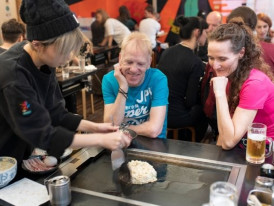
Customer cooking their own okonomiyaki at a teppanyaki table
Okonomiyaki: The People's Pancake
If takoyaki is the appetizer, okonomiyaki is the main event. This savory japanese pancake represents everything great about Osaka cuisine – it's messy, customizable, and absolutely satisfying.
The base starts simple: flour, eggs, and cabbage. But then comes the fun part. Want meat? Throw it in. Seafood? Absolutely. Cheese? Why not? This is Japan meets comfort food, and it works beautifully.
The best okonomiyaki joints let you cook it yourself. They bring you the batter, point to the hot griddle, and let you create your masterpiece. It's interactive dining at its finest, and the locals love showing off their flipping skills.
What if your day in Osaka was planned by someone who knows it — and you?
City Unscripted matches you with a local host who creates a private experience based on your interests, not a set route.
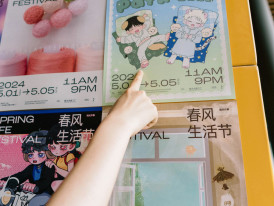
Group of friends pointing at a food menu written in Japanese characters. Photo by 8 verthing on Unsplash
Street Food Tours: Worth It or Tourist Trap?
Here's my honest take on food tours in Osaka – some are great, others are overpriced tourist magnets. The trick is knowing which ones actually take you where locals eat.
A good osaka street food tour won't just show you the famous spots. It'll introduce you to the hole-in-the-wall places that don't make it into guidebooks. These tours develop relationships with vendors, ensuring you get the authentic experience, not the watered-down tourist version.
But honestly? The best tour is the one you create yourself. Grab some friends, hit the streets, and explore. Follow your nose, follow the crowds of locals, and don't be afraid to point at something you can't pronounce.
Summary: Quality food tours connect visitors with authentic local vendors, but self-guided exploration often yields the most memorable street food discoveries.
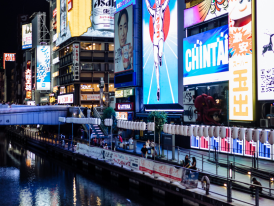
Early morning food stall preparation with vendors arranging ingredients
What About the Famous Spots?
Yes, Dotonbori is touristy. Yes, you'll see the famous Glico running man sign. But here's the thing – some places become famous because they're actually good, not just because they're pretty.
The key is timing and attitude. Visit these famous locations during off-peak hours, when the tour groups have moved on and the locals come out to eat. That's when you'll discover why these places earned their reputation in the first place.
Don't skip the famous spots entirely – just approach them like a local would. Know what you want, order confidently, and don't linger taking photos when there's a line behind you.
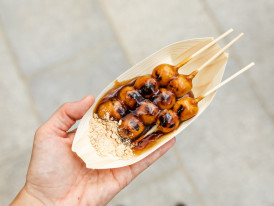
Mitarashi dango on skewers with glossy sweet soy glaze
Beyond Takoyaki: Hidden Gems
Osaka street food extends far beyond the octopus balls everyone talks about. Let me introduce you to some absolutely delicious options that tourists often miss.
Kushikatsu – grilled meat and vegetables on a stick – represents Osaka's working-class roots. These bite-sized pieces get coated in flour, dipped in batter, and fried until golden. The rule? Never double-dip in the communal sauce. Seriously, locals will call you out.
Then there's mitarashi dango – sweet rice dumplings glazed with a sweet soy sauce that's completely different from the takoyaki version. These traditionally filled treats bridge the gap between street food and dessert.
Summary: Osaka's street food diversity includes kushikatsu (fried skewers with communal sauce etiquette) and mitarashi dango (sweet glazed rice dumplings).
Tip
We match you with the right host, not just any guide.Want to experience the real Osaka with someone who lives there?
A fully private experience, planned and led by a local host who tailors the day to you
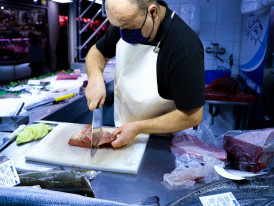
Tuna being expertly sliced at a market stall with customers watching. Photo by Scottish Skies on pexels
Fish, Sushi, and Seafood Streets
Don't think Osaka street food is all about fried batter. This city's relationship with seafood runs deep, and the streets reflect that beautifully.
Kuromon Ichiba Market shows you exactly what I mean. This isn't just a market – it's a street food paradise where you can eat sushi, sashimi, and grilled seafood while standing shoulder-to-shoulder with locals grabbing their daily groceries.
The tuna here is absolutely incredible, and watching the knife work is like witnessing art in motion. These aren't restaurants – they're market stalls that happen to serve better fish than most upscale sushi places.
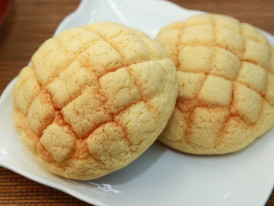
Fresh melon pan bread with distinctive cross-hatch pattern on top
Sweet Treats and Dessert Streets
Osaka's sweet side deserves its own celebration. While savory dishes dominate the conversation, the dessert street food scene is quietly amazing.
Fish shaped pastry – taiyaki – fills with everything from traditional sweet red bean to modern flavors like cheese and strawberry. Watching them get made is mesmerizing, and eating them warm is pure joy.
Melon pan brings something completely different to the table. These sweet, cookie-crusted breads don't actually contain melon, but their texture and subtle sweetness make them perfect for wandering the streets on a cool night.
Summary: Osaka's dessert street food ranges from traditional taiyaki with sweet fillings to modern melon pan, offering perfect treats for evening strolls.
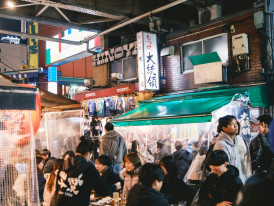
Group of locals sharing food and beer at an outdoor stall seating area Photo by Nichika Sakurai on Unsplash
The Night Food Culture
Here's when Osaka truly comes alive – after dark, when the neon lights kick into full gear and the real street food culture emerges.
The night transforms these streets into something magical. Steam rises from countless stalls, mixing with the glow of neon lights and creating an atmosphere you won't find anywhere else in the world.
Night is when locals finish work and hit the streets for beer and casual food. It's when the real conversations happen, when strangers become friends over shared plates, and when Osaka shows its true personality.
The energy is infectious. You can't help but get caught up in the excitement, the laughter, and the pure fun of eating good food with good people.
Ready to plan your perfect day in Osaka?
Start your experience
Food stalls near a busy train station with commuters and tourists. Photo by 1Click on Unsplash
Location, Location, Location
Not all Osaka streets are created equal when it comes to street food. Let me break down the geography for you.
Dotonbori gets the headlines, but Shinsekai offers grittier, more authentic experiences. The area around the train station provides convenient access to quality food without the tourist markup.
Each location develops its own character and specialties. A short walk from any major train station will reveal completely different food cultures, proving that Osaka japan offers incredible diversity within a compact area.
Summary: Different Osaka districts offer distinct street food experiences, from touristy Dotonbori to authentic Shinsekai and convenient station areas.
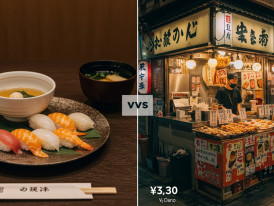
Price comparison showing expensive hotel menu versus affordable street food portions.
Hotel Food vs Street Food: Why Bother Going Out?
Your hotel probably serves food. Maybe even good food. But here's why you need to explore the streets anyway.
Hotel food, even in great hotels, plays it safe. Street food takes risks, experiments, and reflects the real culture of Osaka. You're not just eating – you're participating in a tradition that spans generations.
Plus, the value is incredible. What you spend on one hotel meal could fund an entire street food tour, sampling dozens of different dishes and discovering flavors you never knew existed.
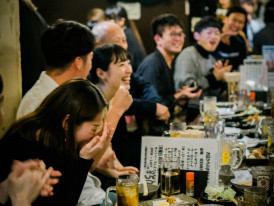
Spontaneous food discovery moment with surprised and delighted expression Photo by Richard Iwaki on Unsplash
The Great Choice Dilemma
With so many options, decision paralysis is real. Here's how locals navigate the overwhelming choices.
Follow the smoke. Follow the crowds. Follow the locals who clearly know what they're doing. If there's a long line of people who look like they live here, that's your signal.
Don't overthink it. Part of the street food experience is spontaneity. See something that looks interesting? Try it. The worst case scenario is you discover something new, and the best case is you find your new favorite dish.
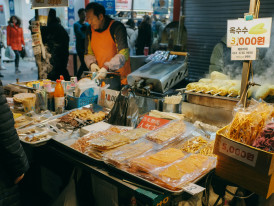
Busy stall with constant customer flow and fresh ingredients being used Photo by Huy Phan on Unsplash
Quality Control on the Streets
One concern I hear from visitors: How do you know the street food is safe and high-quality?
Here's the reality – these vendors depend on reputation and repeat customers. A food stall that makes people sick doesn't survive long in a competitive environment like Osaka. The turnover is too fast, and word spreads too quickly.
Look for busy stalls with high turnover. Fresh ingredients, quick cooking, and constant customer flow usually indicate both quality and safety.
Summary: Street food quality in Osaka is maintained through reputation, high turnover, and competitive pressure among vendors.
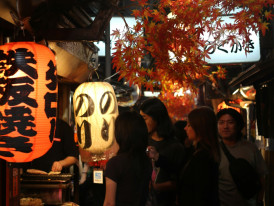
Autumn street food with seasonal ingredients like sweet potato and chestnuts Photo by Barbara Campagnoli on Unsplash
Seasonal Street Food Adventures
Osaka street food changes with the seasons, offering different experiences throughout the year.
Winter brings comfort foods that warm you from the inside out. Hot takoyaki, steaming okonomiyaki, and warming mitarashi dango become even more appealing when the temperature drops.
Summer festivals introduce lighter options and an explosion of creativity. Vendors develop special seasonal dishes that you won't find any other time of year.
Each season develops its own rhythm and specialties, giving you different reasons to visit throughout the year.
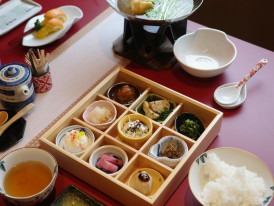
Small portion sampling strategy with multiple small dishes Photo by Boyan Ji on Unsplash
Building Your Osaka Street Food Strategy
Ready to develop your own approach? Here's how to maximize your street food adventure.
Start with the classics, but don't stop there. Get your takoyaki and okonomiyaki photos, then venture into the unknown. The real discoveries happen when you stop following the guidebook and start following your curiosity.
Pace yourself. Street food is about volume and variety, not filling up on the first thing you try. Small portions, multiple stops, and plenty of walking between destinations.
Summary: Successful Osaka street food exploration requires trying classics first, then venturing beyond guidebooks with a small-portion sampling strategy.
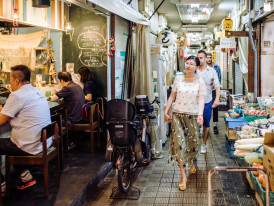
Local giving enthusiastic food recommendations to curious visitors
The Social Side of Street Food
Street food in Osaka isn't just about the food – it's about the experience, the connections, and the community.
You'll find yourself talking to people you never would have met otherwise. The shared experience of discovering great food breaks down barriers and creates instant connections.
Don't be shy about asking for recommendations. Locals love sharing their favorite spots, and vendors appreciate customers who show genuine interest in their craft.
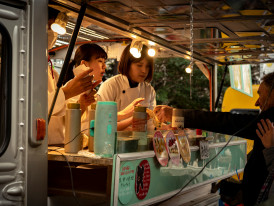
Cultural immersion moment with food as the bridge between cultures Photo by Habib Beaini on Unsplash
Making the Most of Your Trip
Whether you're here for a day or a week, street food should be central to your Osaka experience.
Budget accordingly. Street food is incredibly affordable, but when you're trying everything, costs can add up. The good news? Even a big street food day costs less than one fancy restaurant meal.
Consider it part of your cultural education. This isn't just eating – it's understanding how Osaka lives, works, and celebrates.
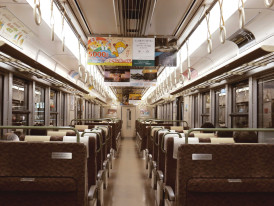
Quick train ride to authentic food neighborhoods away from tourist areas Photo by 戸山 神奈 on Unsplash
Beyond the Main Attractions
The real gems hide in residential neighborhoods where tourists rarely venture.
These areas offer lower prices, higher authenticity, and the chance to see how street food fits into daily life rather than just tourist entertainment.
The extra cost of staying in central areas might not be worth it if you're willing to take short walks or quick train rides to where the real action happens.
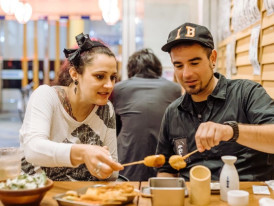
Final celebratory shot of diverse street foods and happy people enjoying them
Final Thoughts: Why Osaka Street Food Matters
This isn't just about eating. It's about understanding what makes a city tick, what brings people together, and how food can tell the story of a place and its people.
Osaka street food represents something authentic in an increasingly homogenized world. It's messy, unpredictable, and absolutely real in the best possible way.
When you visit, don't just eat the food – experience the culture. Talk to the vendors, watch the preparation, and let yourself get caught up in the energy that makes these streets special.
Trust me, your taste buds will thank you, your wallet will appreciate the value, you'll understand why people fall in love with this city through its food, and you'll find the best hidden food spots in Osaka.
The streets are calling. Time to answer.
Ready to dive into the authentic Osaka experiences that make this city unforgettable? Book your Osaka street food tour and discover why locals can't stop talking about these incredible flavors.
What if your day in Osaka was planned by someone who knows it — and you?
City Unscripted matches you with a local host who creates a private experience based on your interests, not a set route.
Want to experience the real Osaka with someone who lives there?
A fully private experience, planned and led by a local host who tailors the day to you
